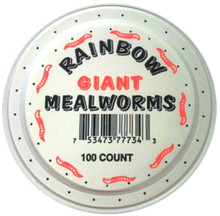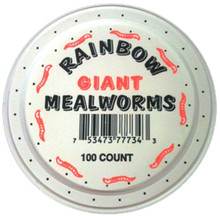Answer

Dec 28, 2020 - 05:35 PM
First, let me explain the mealworm life cycle. Mealworms are brought into the world as an egg. They hatch and their larvae are what we call mealworms. They go through 5 or 6 stages where they shed, grow larger and eventually pupate (go through metamorphosis) and turn into a beetle. The beetles mate and lay eggs and the cycle starts again.
To grow our Giant mealworms we delay pupation causing them to expend the energy reserved for metamorphosis and instead use it growing larger and longer.
Once in your care, however, when Giant mealworms are in normal 'mealworm' conditions some (though not many) will pupate. The resulting beetles will be able to lay eggs, though they have used so many of their stored resources growing that the few eggs they lay will not be useful for breeding purposes. The resulting worms that hatch from those eggs will be regular mealworms.
If you are interested in raising your own mealworms, we recommend our regular mealworms which are taken from our growing racks we use for future generations and will readily pupate and the resulting beetle will lay many eggs for you
![[RAINBOW MEALWORMS]](https://cdn2.bigcommerce.com/server700/236bd/product_images/uploaded_images/ask-us-a-question.png?t=1555860964&_ga=2.63975151.1964021392.1553523198-536666054.1553523198)





Add New Comment